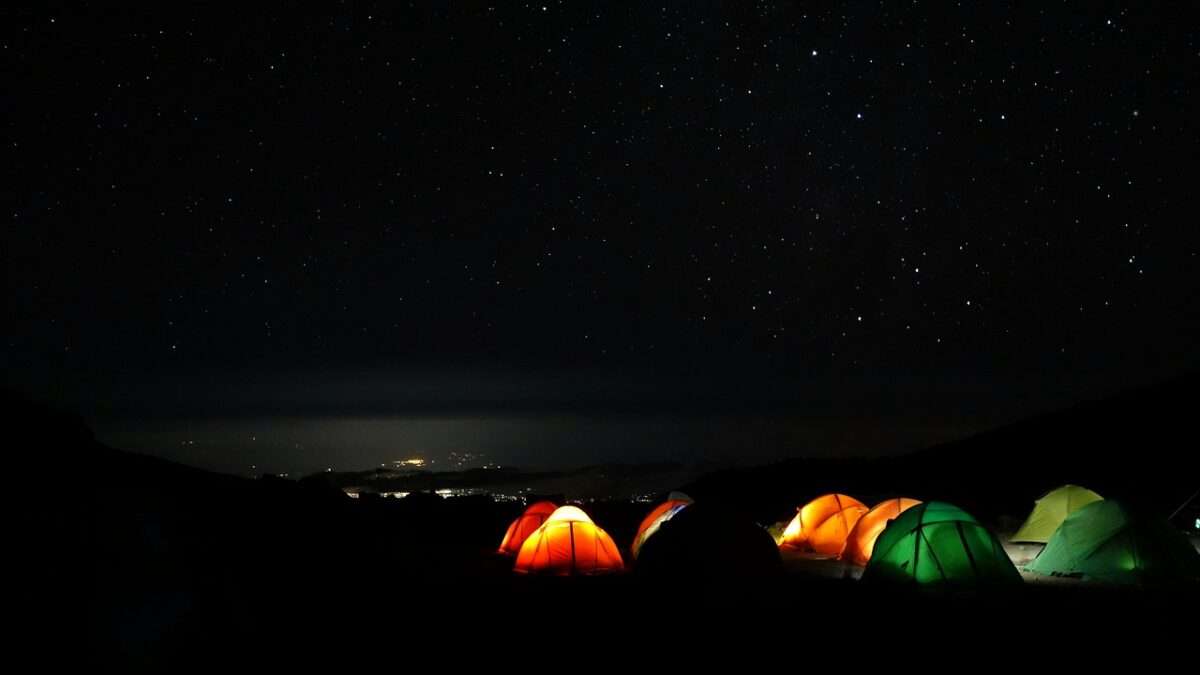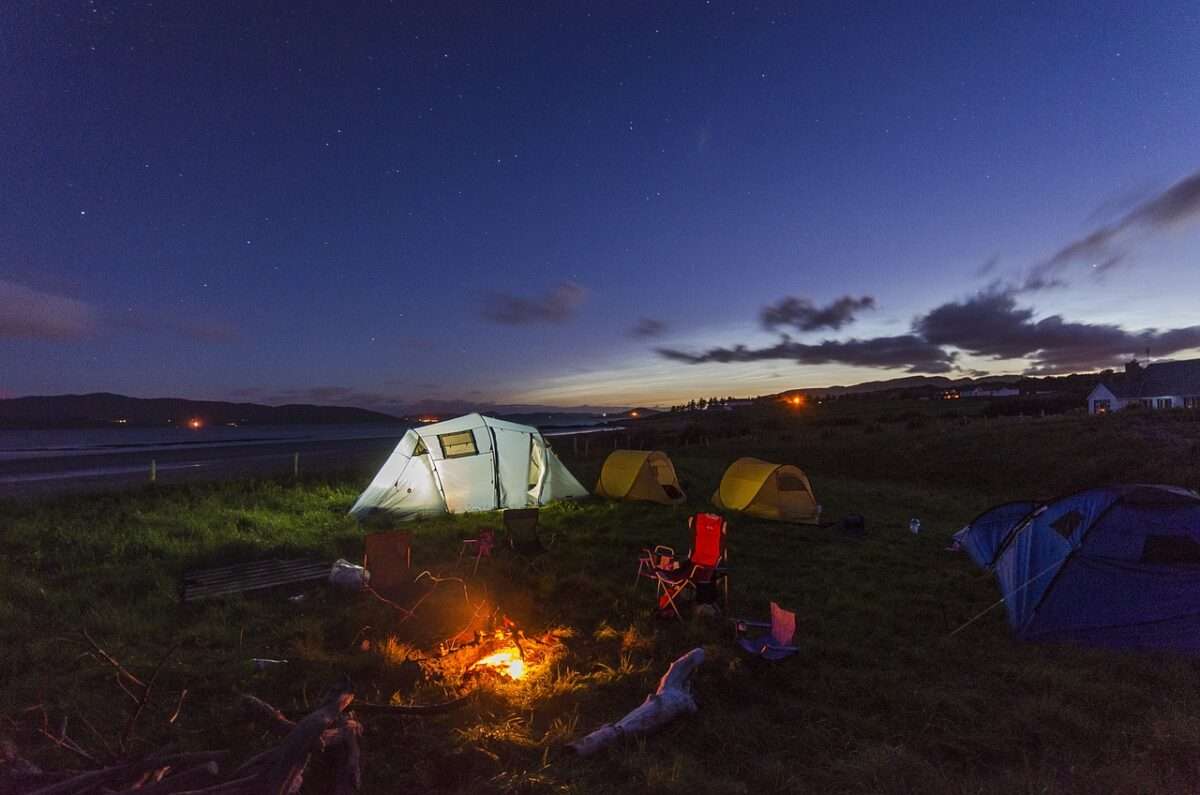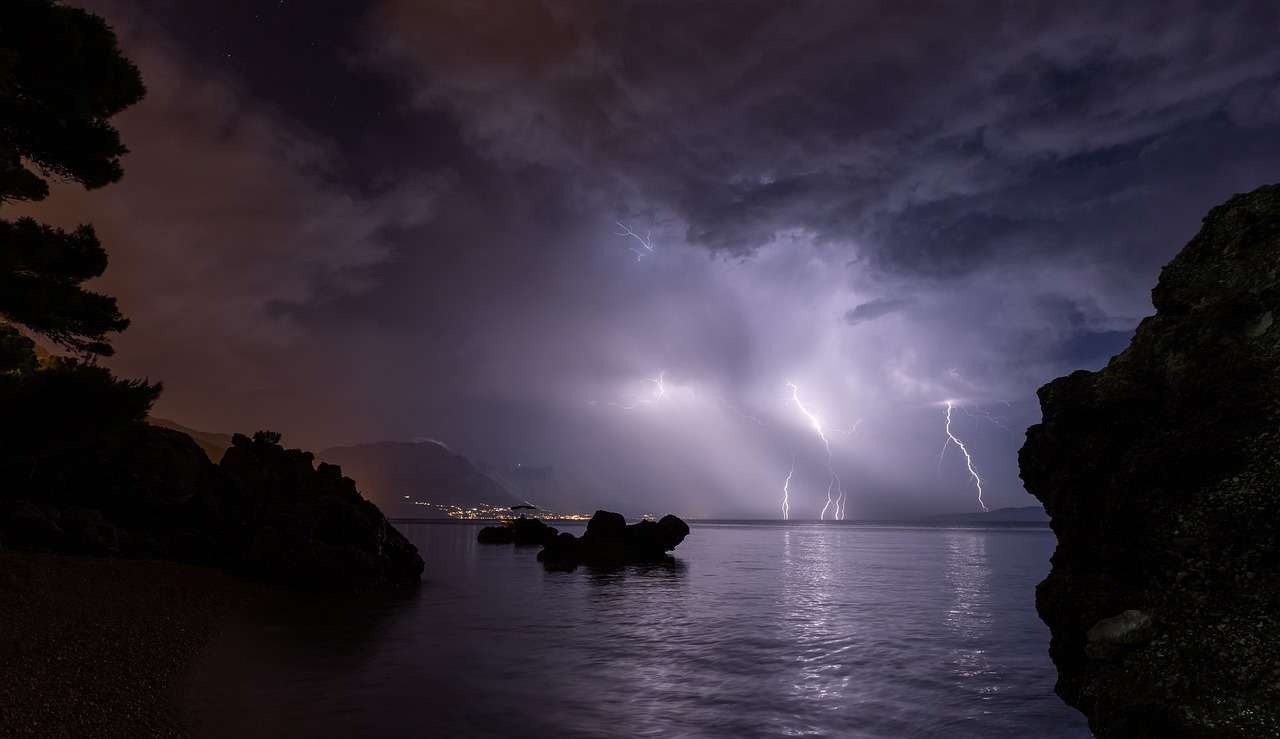Camping is all about embracing the great outdoors, but what happens when Mother Nature decides to put on her most electrifying show? Tent camping in thunderstorms safely can be an incredible experience, but it also comes with its fair share of risks. This comprehensive guide will help you understand the dangers, debunk myths, and offer practical tips for staying safe while camping during a thunderstorm.
The Risks: Understand What Thunderstorms Entail for Campers
Thunderstorms bring heavy rain, strong winds, and lightning, which can pose significant threats to campers. In the United States, lightning is responsible for an average of 20 deaths and over 300 injuries per year. Of course, these figures also include non-camping related accidents – but campers should still take the risks seriously.
Decoding Myths: Are Tents Safe from Lightning?
A popular misconception is that tents can provide safety from lightning. In reality, most tents do not offer adequate protection. Tents made from fabric and supported by aluminum poles will not protect you from a direct lightning strike. As a result, you must take additional precautions to ensure your safety while camping during thunderstorms.

Prepping for the Storm: Tent Selection, Location and Set-Up
Tent camping safely in thunderstorms, make the following considerations while camping:
1. Tent Selection: Invest in a tent designed for stormy weather. Double-wall tents with full-coverage rain flies, strong pole systems, and mesh ventilation will fare better in thunderstorms.
2. Location: Avoid camping under tall trees or at the base of mountains, where lightning strikes are common. Instead, choose a lower area with shorter vegetation.
3. Set-Up: Use stakes and guylines to firmly anchor your tent, ensuring it won’t blow away during high winds. Keep your gear away from the tent walls to avoid moisture leaks.
Deciphering Thunderstorm Patterns: Become Weather Wise
Thunderstorms have certain patterns; they often occur in the late afternoon and are more frequent in the spring and summer months. Not all thunderstorms consist of heavy rains and dangerous lightning. Some merely present with ominous-looking clouds and thunder. This makes it crucial to understand the impending weather circumstances while camping. Be familiar with weather channels and alerts, check forecasts regularly, and learn how to read the sky.

Dressing for a Thunderstorm: Your Portable Shelter
When tent camping in thunderstorms, what you wear can make a difference. Consider these clothing essentials:
- Rain Jacket and Pants: Choose breathable and waterproof materials. Go for jackets with a good hood and high collar.
- Waterproof Boots: Ensure your footwear is sturdy, waterproof, and comfortable.
- Quick-dry Clothes: Lightweight, quick-drying fabrics are ideal. Avoid cotton as it loses all its insulation power when wet.
- Extra Layers: Pack additional layers of clothing to combat the chilly weather that often accompanies a thunderstorm.
Safety Strategies: What to Do in a Tent During a Thunderstorm
Follow these safety guidelines if caught in a thunderstorm while tent camping:
- Stay informed- Monitor weather updates using a portable weather radio, smartphone apps, or GPS devices.
- Heed the 30/30 rule – Seek shelter when you hear thunder less than 30 seconds after seeing lightning. Wait 30 minutes after the last thunder to resume activities.
- Maintain a low profile – Crouch down in the middle of your tent, keeping your hands on your knees and your feet close together.
- Don’t touch the tent walls – Metal poles or wiring could conduct electricity in a lightning strike.
- Take off metal and electronic items – Jewelry and devices could increase your risk of injury from a direct or nearby lightning strike.
Food and Supplies to Carry: The Lifeline of Your Camping Trip
During inclement weather, having the right food and supplies can be critical. Here are a few must-have items:
- Nutritious Snacks: Opt for high-energy, non-perishable snacks like nuts, jerky, protein bars, or dried fruit.
- Instant Meals: Ready-to-eat meals or instant cook meal pouches are ideal in unfavorable weather conditions.
- Drinking Water: Always carry an adequate amount of water alongside water purification methods.
- First Aid Kit: A well-stocked first aid kit is your best defense during any camping trip, but even more so when braving the storms.
- Emergency Heat Source: This can be a few hand warmers, a small camp stove, or other heat-generating items.

Life-saving Recommendations: How to Insulate Yourself in a Thunderstorm
A camping pad made of insulating, non-conductive materials such as foam or closed-cell can provide a modest measure of protection from ground currents. Use this pad to crouch down inside your tent, minimizing contact with the ground.
Advanced Tips: Thunderstorm Camping Do’s and Don’ts
Do:
- Plan your trip according to weather forecasts.
- Keep a flashlight, extra batteries, and a first-aid kit handy.
- Remain in your vehicle if within proximity, as it offers better protection than a tent.
Don’t:
- Use tarps, umbrellas, or metal objects during a thunderstorm.
- Rely solely on your tent for protection from lightning.
- Hesitate to cut your trip short if your safety is in question.
Tent camping in thunderstorms safely can be a thrilling experience for those who embrace the adventure and respect the weather. Employ the safety strategies shared in this guide to ensure your camping experience remains a positive one, even when faced with one of Mother Nature’s most powerful displays.
Don’t let thunderstorms dampen your camping spirits; share this guide with fellow campers to promote safe and responsible tent camping during thunderstorms. Wishing you a safe and unforgettable camping adventure!

Leave a Reply
You must be logged in to post a comment.